The COVID-19 global pandemic has grounded almost 60-70% of aircraft fleet across the world for many airlines. This challenge the aviation industry has been facing has taken a toll on air travel across the globe. With countries, including India, implementing complete lockdown in phases and restricting passenger air travel, this is the time when the actual workload has increased for airlines.
Aircraft Fleet Grounding for Maintenance
Globally, airlines have grounded their diverse fleet of aircraft. They have been working hard to maintain the aircraft and keep them safe and ready for operations. When aircraft are grounded for maintenance, it becomes the job of the “Engineering” team to keep the aircraft airworthy. The engineering team perform various checks on the aircraft (both exterior and interior) as part of the line maintenance and hangar checks. From battery to engines, all vital aircraft components are thoroughly checked for defects and fatigue, and replaced as necessary.
Things aren’t any different at Air India!
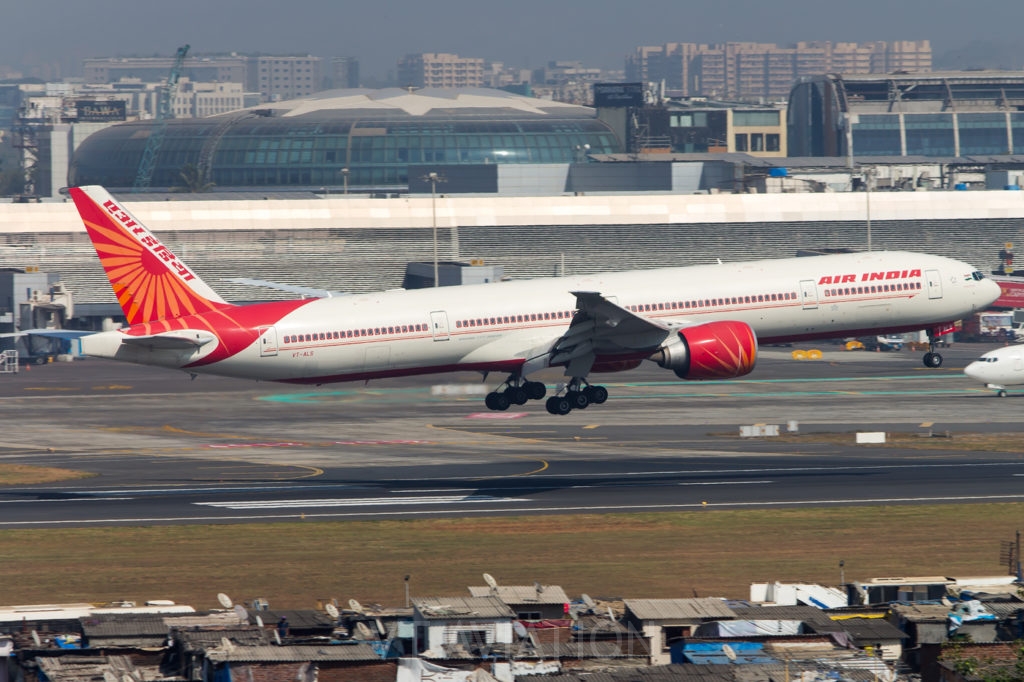
Air India, the National carrier of India, has also grounded a large number of their aircraft across various airports in India. The airline has also been very active operating multiple relief and evacuation flights, and repatriation flights as part of the ongoing “Vande Bharat” mission. While the aircraft are continuously operational, it becomes very important for the engineering team to perform the fumigation, disinfection and disinsection procedure when on the ground. The engineering team also take this opportunity to perform the engineering checks on the aircraft components.
So, what happens behind the scenes during the maintenance?
Air India recently released a video on their social media platforms that covers the efforts taken by their Engineering Services team to keep their aircraft safe and ready for travel.
#FlyAI : Feel safe when you fly with us. Watch how ready we are to make your travel safe. #FlyTheNewNormal.
https://t.co/rZxvcoHd4l— Air India (@airindiain) May 22, 2020
We, at Team VT Aviation, got a chance to interact with Air India’s Engineering team to understand the process that goes into maintaining an aircraft. Known as Air India Engineering Services Limited (AIESL), this is the team that works hard 24×7 to ensure aircraft are airworthy and safe to fly. We had a lot of questions in mind as to how Air India is getting ready for the operations. How does the airline sanitize the aircraft? What happens when the airplane comes to the hangar for checks? How does the airline preserve every aircraft that is on ground? We had lot of questions and we are extremely thankful to Air India for patiently answering our questions.
Let’s go behind the scenes!
Get strapped in, readers. We will take you on a journey to know what efforts are being taken by AIESL to ensure the aircraft is safe to fly. Once an aircraft comes into the hangar for its checks, the aircraft is subject to two major processes – Sanitization and Active Preservation.
“From an engineering angle, Air India is completely monitoring the Sanitization and Preservation of the aircraft“, says Mr. H.R. Jagannath, CEO of Air India Engineering Services Limited. Mr. Jagannath is a veteran in the Aviation industry and has an experience of over four decades working with Air India.
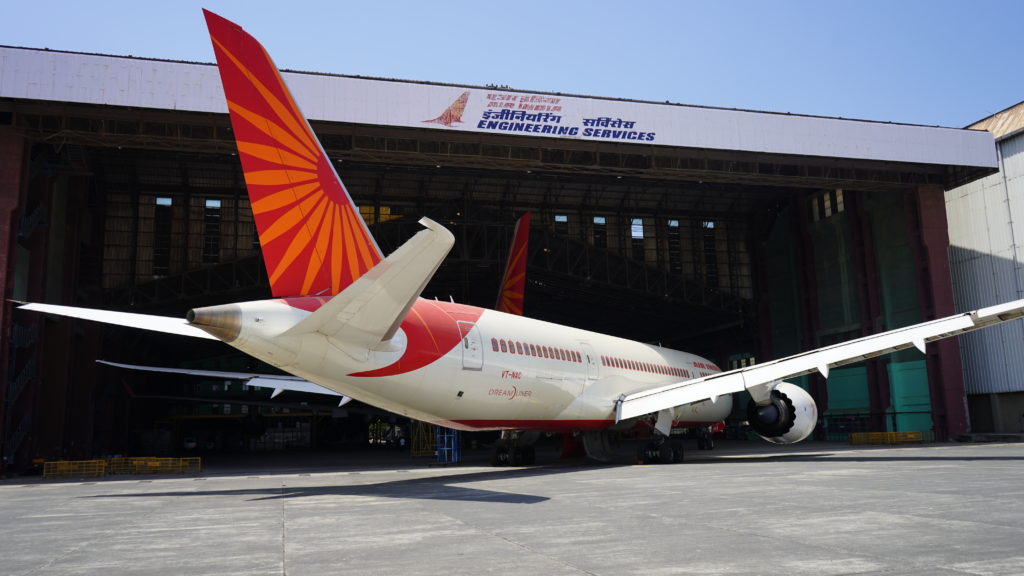
Aircraft Sanitization
Sanitization of the aircraft is the first aspect of maintaining an aircraft. Especially, during this COVID-19 times, while we sanitize ourselves using various alcohol based sanitizers, even the aircraft needs a complete sanitization to be done. After every flight, the engineering team at Air India sanitizes every nook and corner of the aircraft before it takes off for the next flight. Just like how we are advised to use high volume alcohol based sanitizer, the entire fleet is sanitized using a similar high alcohol volume sanitizer.
Q: What type of sanitizers are used? Is it the same one that we humans use?
No! As per the Original Equipment Manufacturer (OEM) like Boeing, Airbus, ATR etc., the fleet has to be sanitized with Isopropyl Alcohol, also known as IPA. IPA helps to kill viruses and germs which may be present inside the aircraft. In order to keep the aircraft clean and safe for passenger operations, IPA is used on every surface once it is thoroughly dusted and cleaned.
Q: What all surfaces are sanitized and cleaned? Who does this tedious job to ensure the aircraft is cleaned properly?
In general, all the touch points that are vulnerable to spreading the virus are thoroughly wiped and cleaned.
A group of specially skilled cabin appearance and cleaning staff ensure that every surface of the aircraft is wiped. Viruses in the interiors of the aircraft need a thorough clean up and this specialised team, overhauled with Personal Protective Equipment (PPE) ensure that you and the aircraft both are safe from infectious bacterias and viruses.

Overhead Bins and Storage
The cleaning staff ensure that all the overhead bins used to store cabin luggage are cleaned and disinfected. In order to do so, IPA is sprayed and the bin is cleaned inside out to kill any virus or germs which can be harmful to people traveling on the flight.
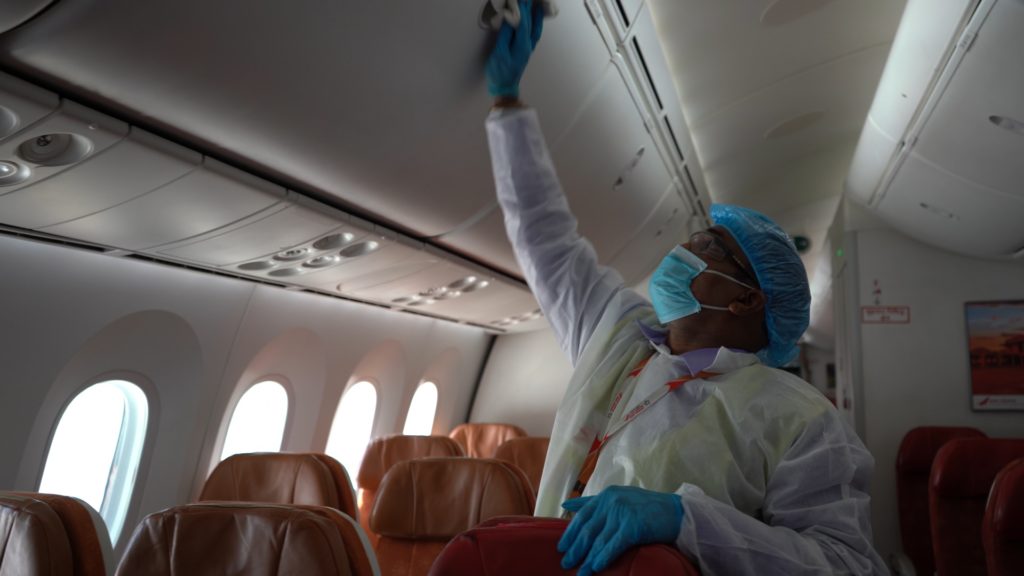
Lavatories
Aircraft lavatories are prone to be infectious as it is used by passengers and crew. In order to ensure there are no viruses in the lavatories, the same IPA solution is used to wipe all the surfaces in the lavatories. This includes toilet seat covers, wash basin, garbage bin cover, storage where amenity kits / toilet papers are stored, etc., as it is used by everyone inside the aircraft. Disinfectants are also sprayed on the toilet seat covers and wash basins.

Seat backs, Tray Tables and IFE Screens
The sanitization team also ensure that your seats are well cleaned, sanitized and ready to make you feel comfortable for whatever duration your flight is. All the seats and armrests are cleaned with IPA. The touch points on the Inflight Entertainment (IFE) are also wiped and cleaned to make them free of viruses.
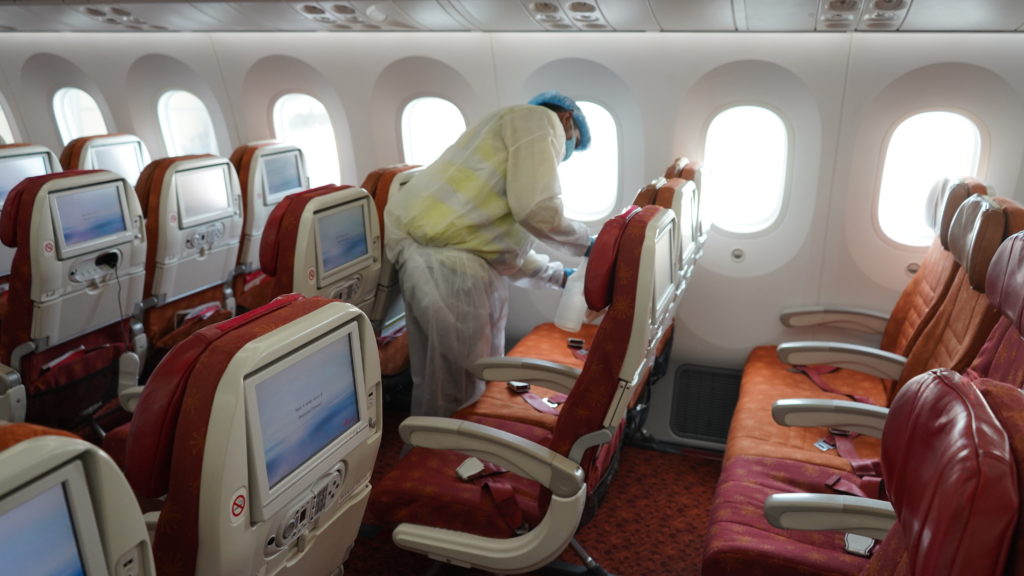
Carpets and Floor
All Air India aircraft feature a plush red carpet that gives you a feel of “Red Carpet Welcome” when you board the aircraft. It’s important that the carpets and the floor is thoroughly cleaned before the next flight. The cabin services team vacuum the carpet surface throughout the aircraft. This helps to remove any germs/viruses that may have settled down on these surfaces.
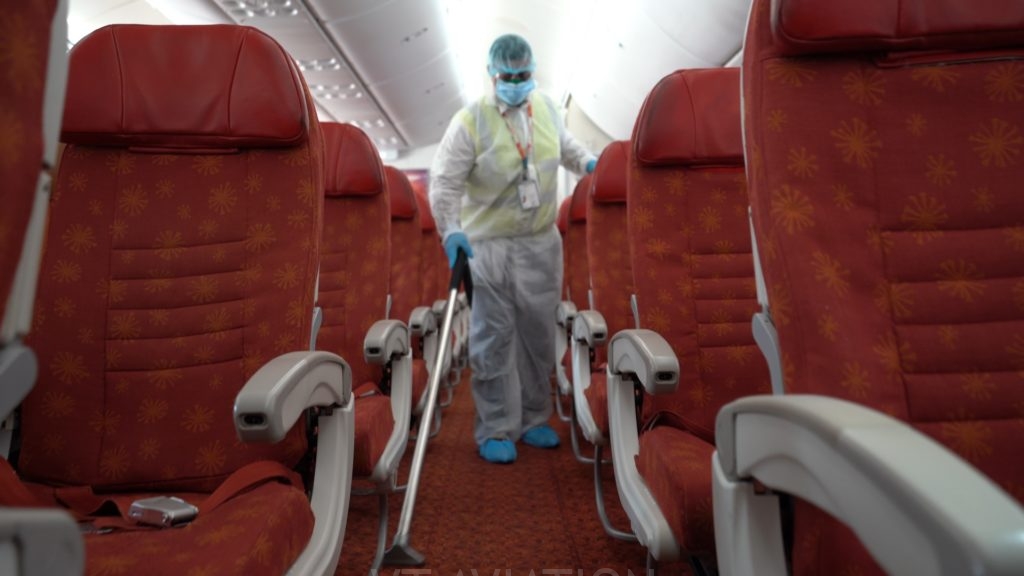
Galley Stations
In addition to the passengers, it’s important for the airline to ensure the safety of their crew. Health and well being of the crew also plays an important role in Aviation. To ensure the safety of the crew, aircraft galleys are completely disinfected. Since most of the items in the galley are built of metal, IPA helps to clean them perfectly. With this, even the crew are presented with a healthier and safe working environment.

Flight Deck (Cockpit)
The cockpit is one of the most sensitive area in the aircraft. The number of active touch points in the cockpit is very high. Pilots need a healthy and safe atmosphere in these sophisticated offices to ensure everyone has a comfortable journey. To ensure no one else, except the pilots, are allowed to stay in the cockpit, not even the viruses, some of the most important parts of the flight deck are disinfected with IPA. Control columns, Electronic Flight Bag (EFB), throttles and a few other components of the cockpit are sanitized too. This is completely done under the supervision of an Aircraft Maintenance Engineer to ensure no parts inside the flightdeck are damaged. This ensures a safe and hygienic working environment for everyone.
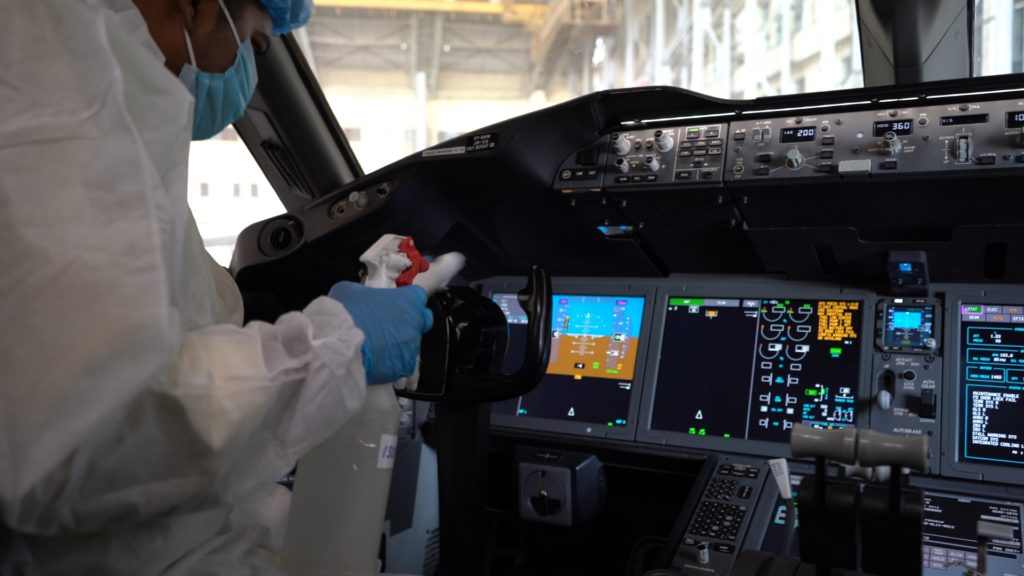
Workshops and Spare Shops in the Hangar
While the aircraft is being completely prepared for passenger operations, the engineering services team at Air India also ensure their workplace is regularly sanitized. All the stores and offices at the Air India hangar are cleaned and sprayed with IPA and other disinfectants. As a result, the staff members feel safe of their working environment. This includes various workshops too where most of the spare metal parts and components of airplanes are stored and accessed frequently.
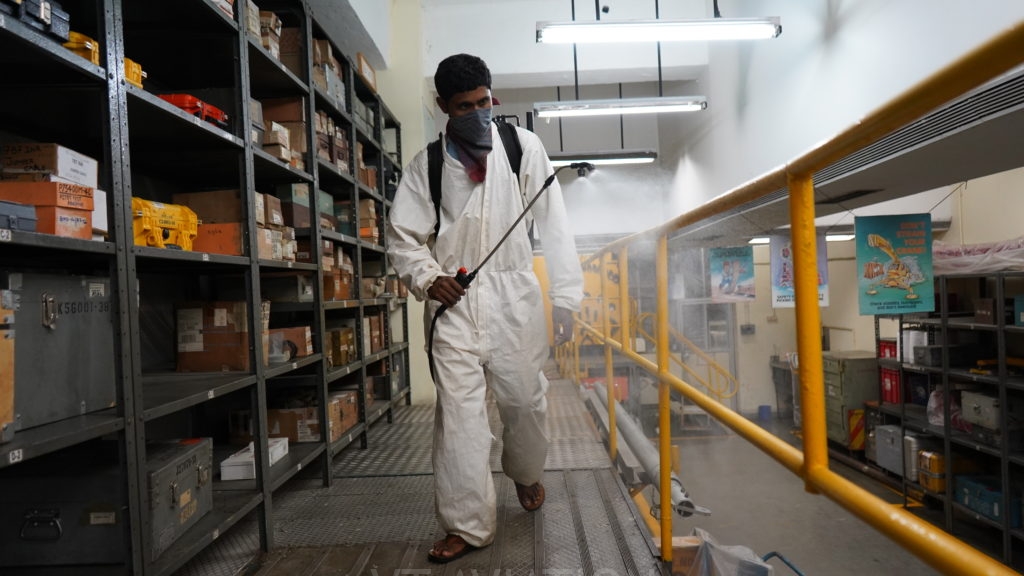
This shows the efforts put in the by the staff of AIESL to maintain every aircraft in the Air India fleet. Every aircraft in the fleet is subject to all of the above mentioned steps before the aircraft departs for the next flight.
Now, moving on to the second stage of maintenance – active preservation of the aircraft. Let’s see how Air India Engineering team performs the aircraft preservation.
Active Preservation of Aircraft
Due to COVID-19, airplanes have been grounded for a really long time. These metal birds need special care while they are on the ground for so long. It is not as easy as maintaining a car! Long grounding and preservation needs special procedures.
While Air India uses most of the airplanes for various operations such as rescue flights, essential cargo flights and repatriation flights, the airplanes are continually operated on a rotational basis so that all airplanes are airworthy and ready to be used for commercial flight operations as and when needed. The airline ensures all the mandatory procedures, as prescribed in the Original Equipment Manufacturer manual are followed. Along with line maintenance checks, which is before and after a flight is scheduled, Air India’s Engineering staff at the hangar ensure that the airplanes in the hangar are being checked properly. Aircraft preservation is a tedious process! However, the professional engineering staff of Air India are up to the challenge and ensure every aircraft is maintained.
Q: What are the activities performed as part of active preservation of the aircraft?
We had an interaction with a Senior Aircraft Maintenance Engineer (AME) to understand the activities performed during active preservation of the aircraft.
Engine Checks and Preservation
Engines are the heart of every aircraft and these billion dollar components need expert handling and care. To prevent any damage to the engine, AIESL team ensures the engines are properly covered when not needed. Not just this, even while working on engines, the team ensures all the technical care and protection is taken so that engines are fit for operations. Also, while the aircraft is in the hangar, necessary oil servicing is done to ensure that as and when the aircraft will be needed to fly passengers, it is in the right shape.

Engines are prone to having dust getting settled on the surface. To prevent any such damage from dust and other foreign objects from going inside the engine while it is not in use, AIESL ensures the engines are covered properly with engine covers. This prevents the engines from any corrosion and hence it remains in a good shape to fly.
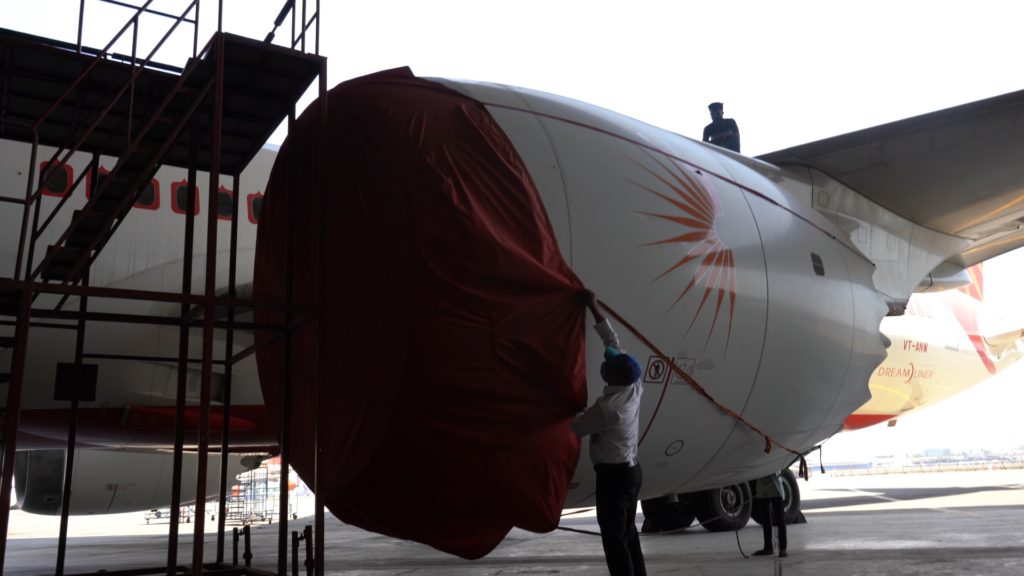
Cockpit and Electrical Preservation Procedures
While the airplanes are grounded for a longer period of time, it is very important for the engineering team to ensure that the cockpit is preserved properly as per the manuals. A standard procedure involves disconnecting the battery of the aircraft. This prevents any damage to the battery while it is not in use for a long time. Switching off the battery switch in the cockpit and also disconnecting the main connection from the aircraft is a part of the long grounding preservation of the aircraft.
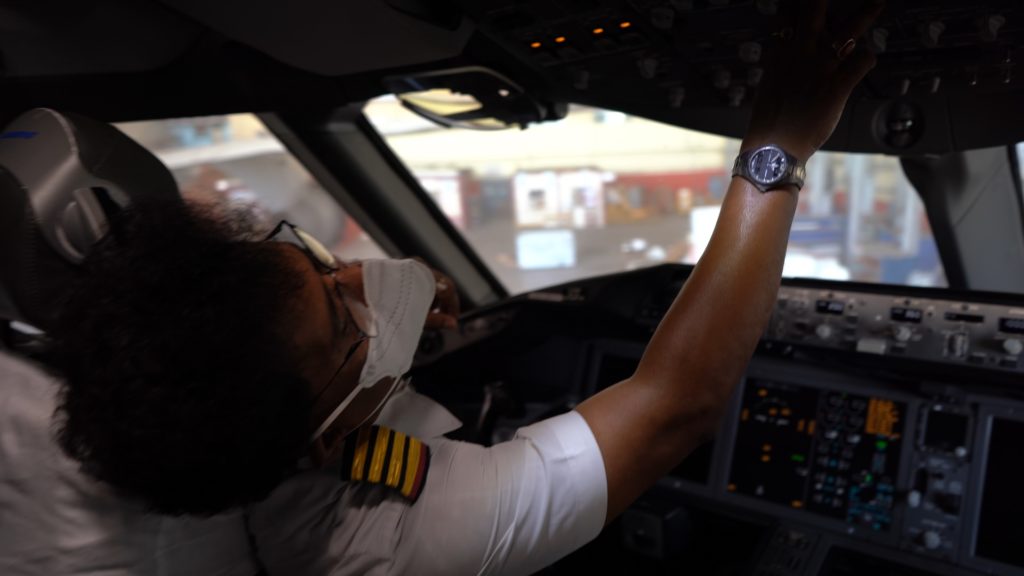
Picture Courtesy: Air India | As a part of the preservation, engineer is about to switch off the battery of aircraft.
Airframe Preservation
Externally, the aircraft has a lot of components which need attention to ensure they are well preserved. Lubrication of the landing gear, flight controls and covering static and pitot tubes are few of the important checks that are done. This not only ensures the safety of the aircraft, but also ensures that the aircraft is ever ready for commercial flights.
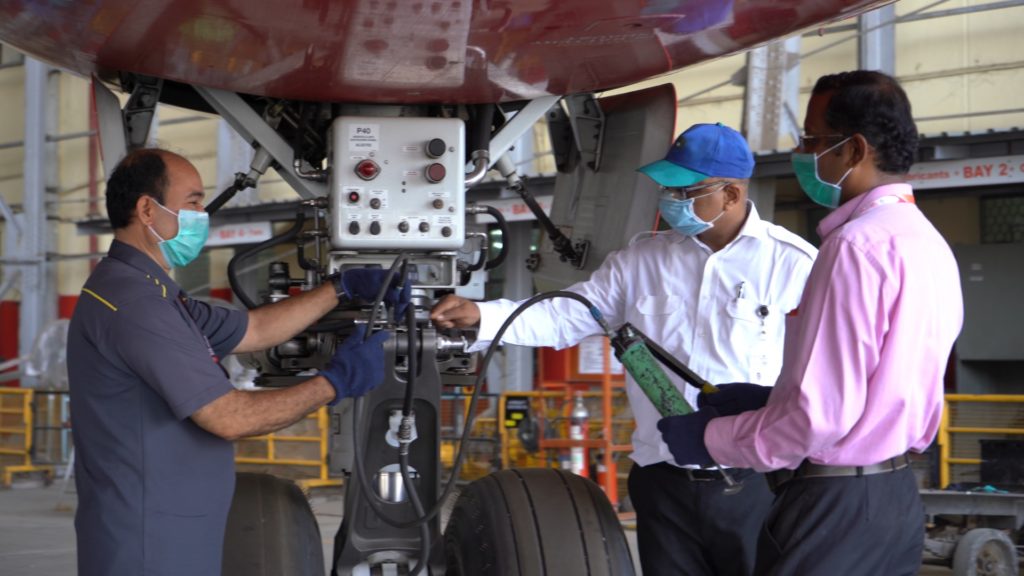
Equal care is taken for both interiors and exteriors of the aircraft. This ensures that the aircraft is completely fit for flight operations. A team of skilled staff clean the aircraft from outside including windows and fuselage. This will maintain the external appearance of the aircraft too. It is very important that utmost care is taken of the machine and hence, all these tasks are carried under the supervision of highly trained and experienced professionals. Everyday, these engineers work round the clock to maintain these flying machines.
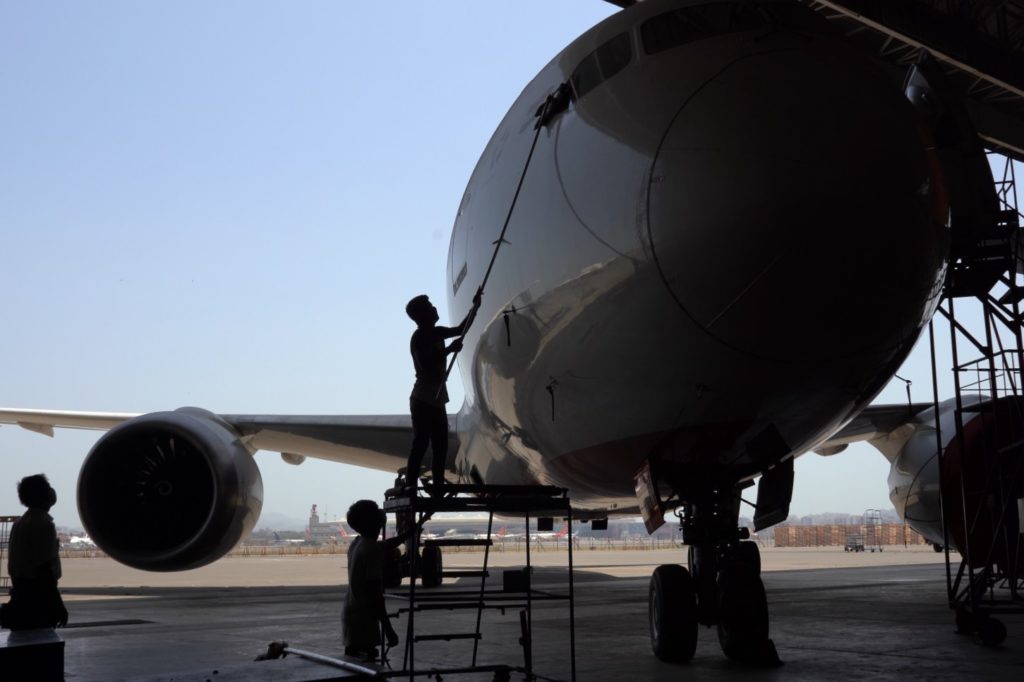
Q: How well advanced is the aircraft we fly in?
While modern day airplanes are technologically advanced, in order to purify the air in the cabin, HEPA filters are installed. HEPA stands for High Efficiency Particulate Air filter. These filters help to keep a mixture of outside and inside fresh air, thus purifying the cabin constantly. HEPA filters help in removing 99.9% viruses and bacteria of the flight. These HEPA filters circulate air 20-30 times in an hour to ensure that fresh air is available to everyone in the aircraft.
Once these procedures are complete, the aircraft is fully ready for its next flight. You are all set to get on board an Air India aircraft and fly to the destination of your choice.
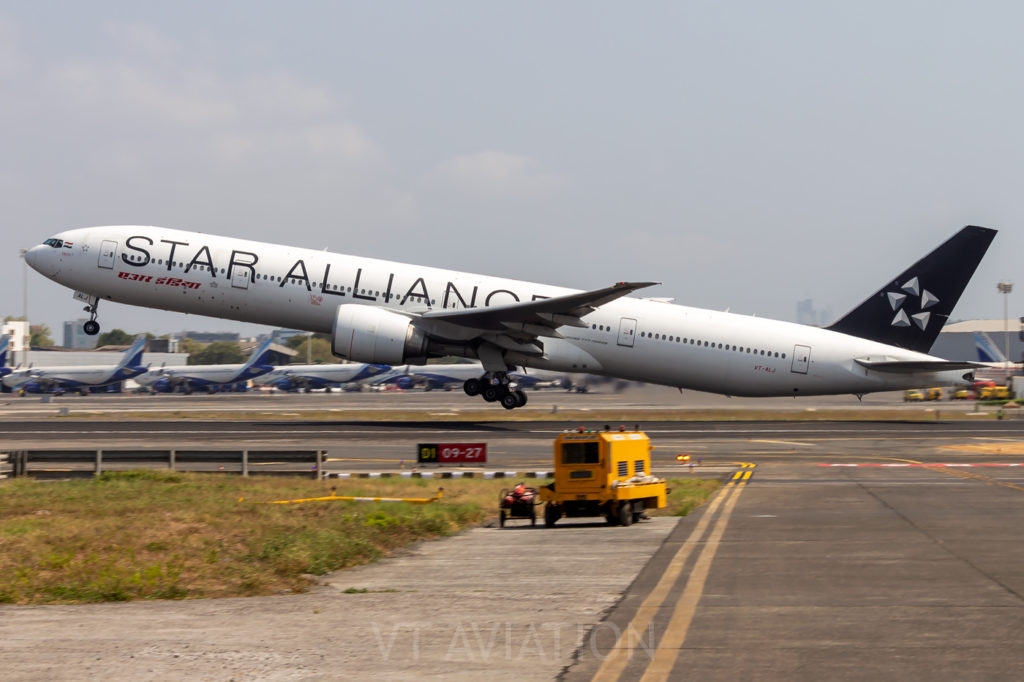
Wrapping Up
Overall, Air India Engineering Services Ltd. has been working round the clock during these crisis situations and many a times, these efforts go unnoticed. As per the CEO of AIESL, the endeavor of him, his team and the entire Air India family is to always ensure that the aircraft is fit, and everyone onboard the aircraft feel safe and comfortable! Safety of passengers, crew and the aircraft is an utmost priority and everyone ensures it is taken care of.
For knowing more about AIESL’s efforts, watch this video published by Air India on their official YouTube channel.

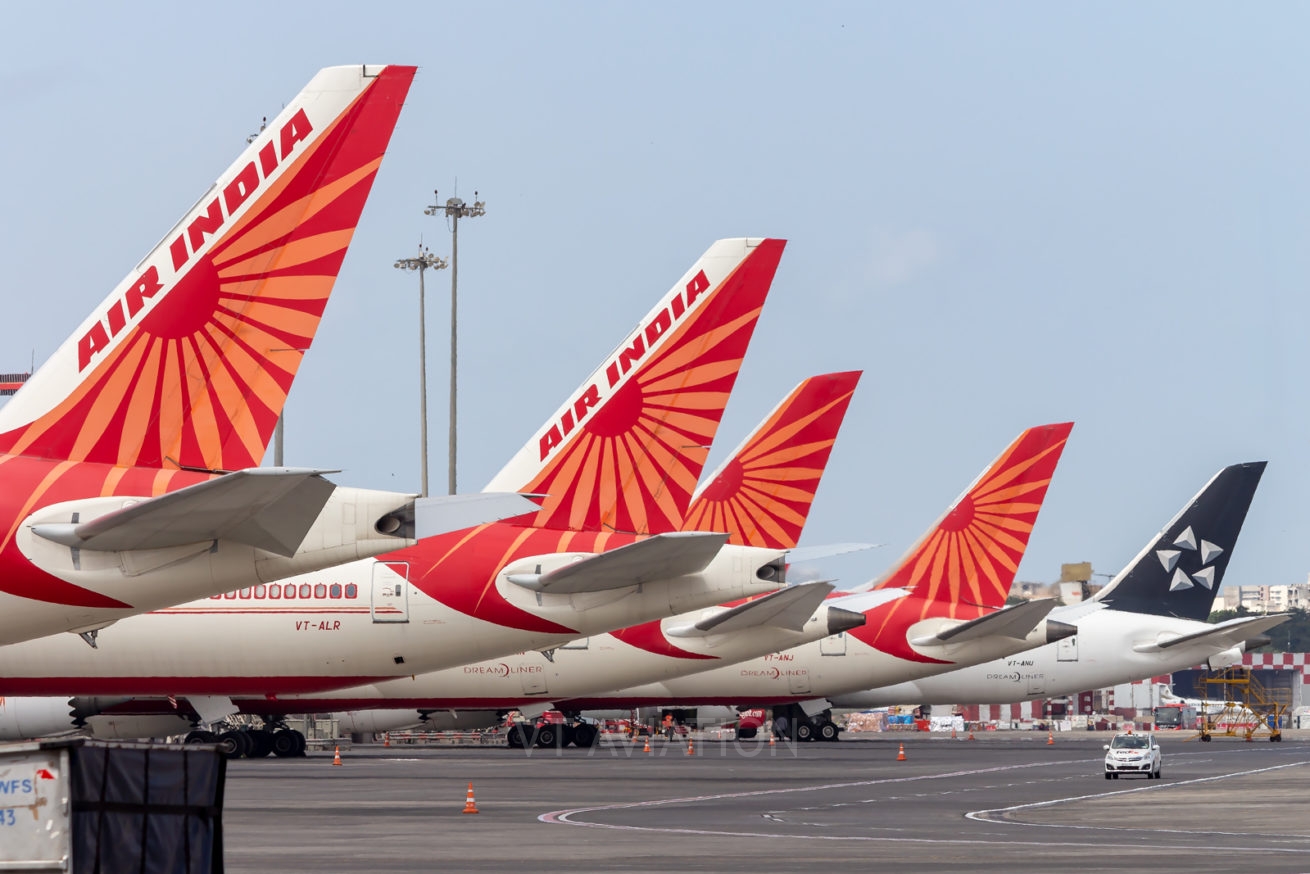

Superb.We have to appreciate your efforts to run the flights smoothly.
Congratulations for crisis period worked lot with covid 19 transported essentials and also lifted passengers around the world.
Indeed! Brilliantly done 🙂
Very much congratulations to AirIndia for their efforts